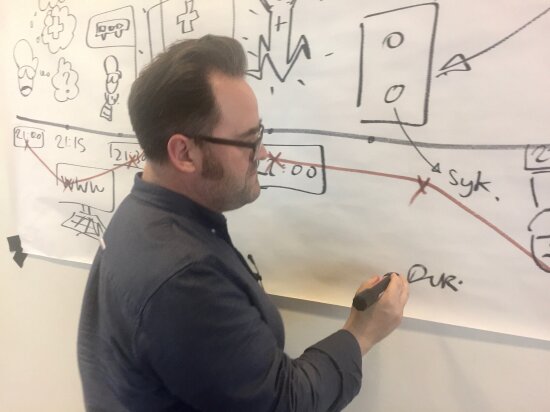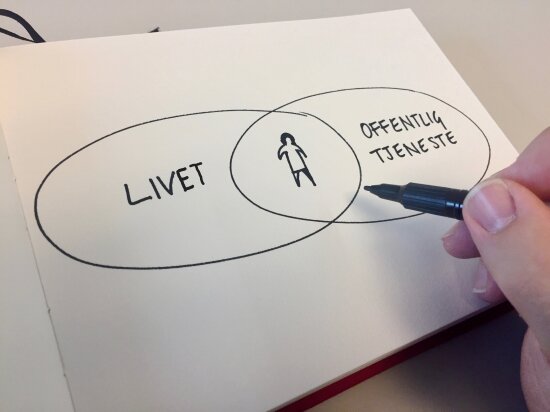This article was published as a commentary in Dagens Næringsliv on 17 July 2017.
The design disciplines in Norway are quite advanced and the quality in both the industry and education is high, making Norway the ideal breeding ground for the global digital services of the future. An international study conducted in 2016 shows that Norway has a fully developed ecosystem for service design in the public sector. Both DOGA and AHO (The Oslo School of Architecture and Design) have worked long and hard to develop competence in this area and various design firms have played an essential role in educating public officials in the use of service design. We experience a strongly growing demand for the specific expertise of designers in multidisciplinary development work in both the public sector and the business community. But a lack of qualified designers and educational options is a significant barrier and more research in this field is needed.
As pointed out by the poet Alexander Pope: ‘to err is human’. But it seems as if we forget this when developing modern digital services. Our focus is on the rational human being when developing technological solutions. Time and again, we experience the exact opposite once the technology is put into use. When Hadja Tajik (Deputy Leader of the Norwegian Labour Party) was stopped on the subway in May, it was easy for the inspector to see that she did not ride for free as a habit simply by looking at her ticket purchasing app. How Hadja was treated is much better than the alternative, namely the ‘terror buss’ on Hausmannsgate, where the inspectors were ‘out to get you’, whether you were a freeloader or simply made an honest mistake.
In the 1990s, public transport users were generally dissatisfied with the public transport options and this tough strategy did not reduce the number of freeloaders. Thanks to Ruter's user-focused services and trust-based attitude towards customers, we are now satisfied with the options and the number of freeloaders has dropped. The empathetic dimension cannot be overlooked.

But what does this have to do with design? Most people still associate design with products like sofas and cars, but designers are also used nowadays to improve and develop entirely new services in both the public sector and business community. Today, the field of design includes disciplines like interaction design, system-oriented design and, last but not least, service design. What they all have in common is the development of new and better solutions for and with people. The more complex the world and our social systems, the more important design is as a tool to solve problems.
User orientation and making public services more effective are easier said than done. The challenges lie in, among other things, the hierarchical system, with its different administrative levels and sectors. Even though every level or organisation carries out its tasks as it should, no single entity is responsible for the whole or for the user journey across various sectors, resulting in silo thinking. At the same time, more and more major societal challenges must be addressed in an interdisciplinary manner.
The Norwegian public sector is digitally mature and we have digital services that are used by almost everyone, in itself proof of good user and design understanding. The goal should be for the public sector to use design methodology systematically in order to create integral and viable solutions in the exciting and challenging times to come. If we are to succeed in the transformation into a smart society, we will have to overcome complex challenges, use new technology effectively and maintain a focus on people.
Hadja Tajik will certainly not be the last person to make a mistake in using public services. But the more effectively we focus on the user, the better and more effective the services will become and we can avoid the unpleasant and ineffective approach of the ‘terror bus’.

